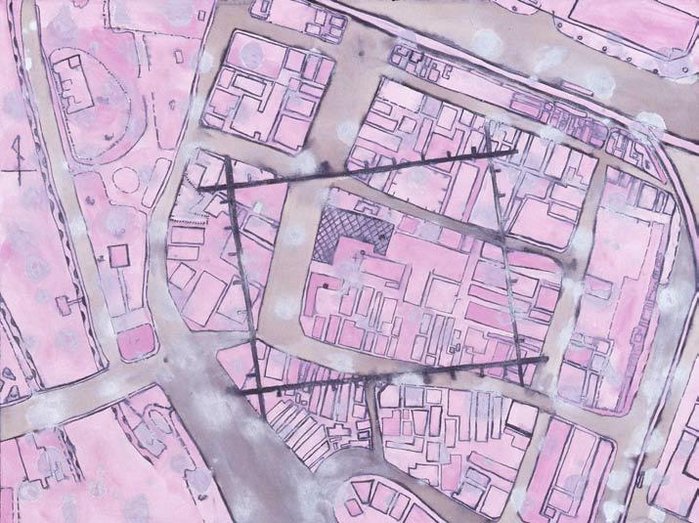Hiroshima: A Visual Record
On August 6, 1945, the United States of America dropped an atomic bomb fueled by enriched uranium on the city of Hiroshima. 70,000 people died instantly. Another 70,000 died by the end of 1945 as a result of exposure to radiation and other related injuries. Scores of thousands would continue to die from the effects of the bomb over subsequent decades. Despite the fact that the U.S. is the only nation to have used atomic weapons against another nation, Americans have had little access to the visual record of those attacks. For decades the U.S. suppressed images of the bomb's effects on the residents of Hiroshima, and as recently as 1995, on the fiftieth anniversary of the bombing, the Smithsonian Institution cancelled its exhibition that would have revealed those effects and settled for the presentation of a single exhibit: the Enola Gay, the plane that dropped the bomb on Hiroshima.
For the victims, the situation is quite different. Hiroshima is now a City of Peace. Everywhere there are memorials to this catastrophic event that inaugurated the Atomic Age and monuments to the commitment to peace at the center of the Hiroshima response to war. A-bombed trees continue to grow and A-bombed buildings remain – marking history, trauma and survival. The city is dotted with clinics for the survivors and their special pathologies. Names are added each year to the registry of the dead as a result of the bomb. This registry is central to the large Peace Memorial Park that houses the Peace Memorial Museum, countless monuments, and a Hall of Remembrance, all situated in the heart of downtown Hiroshima. It has been over 60 years since the atomic bomb was dropped, but the A-bomb is everywhere in Hiroshima.
The enormity of Hiroshima challenges the artist, especially the American artist, in ethical and formal ways. For several years I worked on a series of anti-war drawings of places the United States has bombed, subsequently published as the book Bomb After Bomb: A Violent Cartography, (Charta, Milan, Italy, 2007), with a foreword by former U.S. air force bombardier and radical historian Howard Zinn. After making relatively abstract drawings from the bomber's aerial perspective that include no people – civilians, victims, soldiers or otherwise – I have now been on the ground, 60 years after the bomb was dropped, but still, on the ground. Hiroshima suddenly became real to me.
Hypocenter in Hiroshima, Japan, 1945, from the series Protesting Cartography: Places the United States has Bombed, 1999-2005.
Carol Mavor writes in her essay Blossoming Bombs in Bomb After Bomb: A Violent Cartography,"In slavick's Hypocenter in Hiroshima, polka dots of alabaster wool hover over a pink and grey map speaking a silent sign language hailed by the city's blasted center. At the center there was no sound, but slavick has prettily and eerily marked the silence with the sound of color. The pattern of slavick's Hypocenter cartography could echo the decorative scheme of any woman's fashionable forties American dress, of those women who sat at home unknowingly day dreaming as Little boy was dropped, as children (as every bit as precious as their own) vanished in Hiroshima, or left their childish shadows, their little prints, on the stone steps of their school. The writer Marguerite Duras, in her screenplay Hiroshima mon amour, has referred to these shadow-images, like the famous nebulous silhouette of the unknown person who sat on the steps waiting for the Sumitomo Bank to open, only to vanish with the light of the bomb, as"deceitful pictures."...
